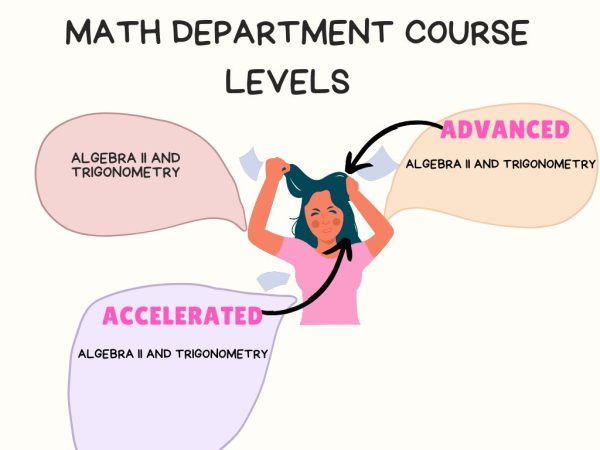Why I don’t stand for the Pledge of Allegiance
“I pledge allegiance to the flag of the United States of America, and to the Republic for which it stands, one nation under God, indivisible, with liberty and justice for all.”
Thirty one simple words that every public school student knows in this country. Thirty-one simple words that I recited every morning from grades K-6, never questioning it, and that I continued to recite every class day when I arrived at Hackley.
But the Pledge of Allegiance has a lesser known history- or at least, one that was unknown to me until very recently. And it is because of this history that I no longer stand for, or recite, the Pledge of Allegiance. So I would like to share this history with the Hackley student body so that you, like me, can make an educated choice about whether or not you would like to continue reciting this pledge.
The original pledge was written by Francis Bellamy, a Christian socialist who was at one point a Baptist minister. He wrote it in 1892, and it read: “I pledge allegiance to my flag and the republic for which it stands, one nation, indivisible, with liberty and justice for all.” (Notably absent: the United States, and the reference to God. Those came later.)
There is a lot of important historical context surrounding the Pledge. First of all, this is coming out of the Civil War, a time of extreme division in the nation, and a time where re-affirming one’s allegiance to the Union was often a required step for people who were suspected of disloyalty. In this sense, it might have made more sense to recite a Pledge of Allegiance than it does now.
A flag movement also began in the late 1880’s- there was simply a desire to sell more flags, and a pledge was used to promote the use of these flags in public schools, at the time rarely seen.
The more immediate reason that the Pledge was written was to celebrate the 400th anniversary of Christopher Columbus arriving in America, which in and of itself could be considered a controversial fact. On Columbus Day of that year (which was officially declared a national holiday by president Harrison and Congress), an estimated ¾ of the 13 million public schools in the US had their students recite the pledge.
The original pledge had one other element- a “stiff, uplifted right-hand salute.” This was discontinued during World War II, due to the resemblance with the Nazi salute.
In the late 19th century, there was a massive wave of immigration into the US. American law at the time was designed to limit this, with legislation such as the Chinese Exclusion Act of 1882 and the Immigration Act of 1891. But Bellamy had personal beliefs about the issues of immigration into the nation as well, and he channeled these when he was writing the pledge.
According to Christopher Petrella, Bellamy “sought to define ‘true Americanism’ against the rising tide of southern and eastern European immigrants ‘pouring over our country’ in the early 20th century from ‘races which we cannot assimilate without a lowering of our racial standard.’” He continued to discuss the fact that the United States “had always been a nation of immigrants.” But he also said that these new immigrants were “a different class” (qtd. by Richard J. Ellis). He called Italian immigrants “the vilest elements,” and made anti-Semitic comments in which he stereotyped Jews. He also wrote in an article that “not all men are born equal.”
All of these xenophobic comments made by Bellamy were channeled into his feelings as he composed the Pledge of Allegiance. The Pledge was a statement that, for him, was meant to define “true Americanism” and bring America back to what he believed to be its initial glory as a nation.
Additionally, “Why Do We Pledge Allegiance?” states that “The pledge likely would have fallen into obscurity if not for the anti-immigrant anxiety that gripped the United States.” So from xenophobic influences and xenophobic continuations, we still recite these words today- but there have been two changes since it was originally written.
In 1923, the National Americanism Commission held a conference in Washington DC to standardize the flag code (until that point, there had been several in circulation). It was felt that the term “my flag” was too general, and so they wanted to change it to “the flag of the United States” instead. This change remained unofficial until Congress passed the US Flag Code in 1942, in the middle of World War Two. This removed the stiff-armed salute but made Bellamy’s pledge the standard one around the country.
It is important to note that in 1943, in West Virginia State Bd. of Educ. v. Barnette, the Supreme Court declared that students could not be required to stand for the Pledge.
The final change to the pledge was made in 1954, this being another change that I disagree with. The addition of the words “under God” was first suggested by the Knights of Columbus, who pitched the idea to congress. A primary reason for this addition was to combat the rise of communism around the world- communism is a godless ideology, and this was intended to pit us against them.
President Eisenhower was in favor of this, as he wanted to continue to present communism as being against American values. He worked very hard to convince Congress that this would be a beneficial change, and succeeded. With the public behind the idea (a poll showed 69% of the public was in favor), the President signed the legislation into law on June 14th, 1954- flag day.
The Pledge has been challenged multiple times throughout history. The first court case arguing against this started in 1938 when an 11-year-old girl who was a Jehovah’s Witness was expelled from her school for opposing the pledge on religious grounds, before the “under God” segment was added. After a judge in 1938 ruled in her favor, the Supreme Court overturned that in 1940, saying “mandatory flag salutes in school were constitutional and thus the expulsion was legal”.
There was a continuation of protests around the country about students getting thrown out of their schools, and in West Virginia State Board of Education v. Barnette (1943), the Supreme Court reversed the previous decision and ruled in a 6-3 decision that children could not be forced to say the pledge.
There has been one more recent challenge to the pledge, and specifically to the addition of God. In 2002, Michael Newdow, an atheist, argued that his daughter should not have to recite the pledge and that it was harmful to her. The 9th Circuit federal appellate court in California agreed with him in a 2-1 vote.
In the summer of 2003, the full panel in the 9th Circuit upheld the decision, the first time any US court had ruled a part of the pledge to be unconstitutional. The court stated that it was a violation of the Establishment Clause, stating that “A profession that we are a nation ‘under God’ is identical, for Establishment Clause purposes, to a profession that we are a nation ‘under Jesus,’ a nation ‘under Vishnu,’ a nation ‘under Zeus,’ or a nation ‘under no god,’ because none of these professions can be neutral with respect to religion” (Newdow v. United States Congress).
But then there was a further appeal to the U.S. Supreme Court, and in Elk Grove Unified School District et al. v. Newdow et al., the Supreme Court dismissed the case on the grounds that Newdow did not have proper standing to bring the case on behalf of his daughter. A complicated backstory was involved in this decision- Newdow was going through a divorce at the time- and the Supreme Court decided that he did not have custody over his daughter. They also determined that he did not have the right to be next friend, meaning to sue as her legal guardian.
This was a unanimous, 8-0 decision. The liberal justices agreed that Newdow did not have standing. Three conservative justices agreed but in a concurring opinion, stating that the pledge’s inclusion of “under God” was indeed constitutional. And Justice Scalia did not participate in the case.
There was also a belief that this argument would continue in future cases, potentially eventually obtaining a definitive decision from the Supreme Court on the constitutionality of the “Under God” clause. There have been two similar lawsuits brought since then, but only on the state level- none have made it to the Supreme Court of the United States.
One other interesting thing to note is that in the Supreme Court’s majority opinion (written by Justice Stevens, with the support of four other justices), they give a brief history of the Pledge. This history mentions nothing about Bellamy’s personal opinions or views- that side of the history is ignored completely.
But between the xenophobia and bigotry that Bellamy channeled when he was writing the pledge and the “under God” line, there is clearly a less-known, and ugly, history behind the Pledge of Allegiance, and I invite you to consider what it means to be an American, and how we represent that, the next time you hear the Pledge.









Otto Grimsley • Jul 18, 2023 at 12:31 am
Thanks for sharing this knowledge of that famous “Pledge Of Allegiance” statement. After finding out that Francis Bellamy channeled his bigotry when writing it, I now have another good reason why I will remain seated, keep my mouth closed & keep my hands off of my chest when the pledge is being said.
Aesthetically? • Nov 2, 2020 at 2:54 pm
I agree but don’t at the same time it’s hard to explain but overall everyone has their opinion but i fully agree that you need to be heard.
Claire L • Sep 24, 2020 at 9:59 pm
Thank you so much for writing this, I go to a Christian Private school and my homeroom teacher told me if I could come up with some “good” reasons not to stand for the pledge I don’t have to stand nor say it. This was easy to understand and written very well! Even though I am only in 8th grade, I still think the people in schools should be informed about what the Pledge of Allegiance really means. The Pledge says, ” with Liberty and Justice for all”, there is not Justice or Liberty for all people. What about the LGBTQIA+ community, and woman who want abortions’, and racism too? Those people are not shown Justice from this country! Thank you so much, this helped a lot to expand my reasoning.
Brooklyn Dove • Sep 22, 2020 at 10:28 am
Thank you for this. I just entered freshman year of high school and we stood for the pledge and someone was sitting, and I asked them why, and they told me to look it up and I did and wow. Just wow. I will no longer kneel or stand for the pledge
Lewis Jones • Apr 18, 2019 at 8:16 am
This is a very well written, thoughtful and thought provoking opinion piece.